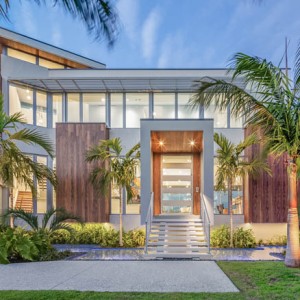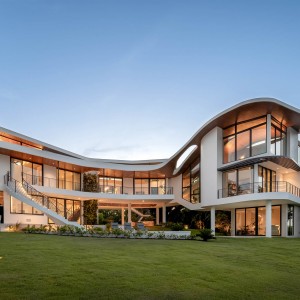The dream of Sarasota’s bayfront as a cultural wonder and a signature park has captured the imagination of Gulf Coast dwellers for years now, but how now can city leaders arrive at a specific vision that delights all? Bill Waddill, the newly-hired managing director of The Bay planning process, will represent the public interest in this monumental task, organizing dialogues with the Sasaki consulting firm hired by Sarasota and the community. SRQ spoke with Waddill about what’s happening on the water in coming months and coming decades.
SRQ: To what degree is this stage almost a reboot on the Bayfront 2020 process? Bill Waddill Bayfront 2020 did the fundamental job of gathering that initial information and building initial coalitions, getting a lot of energy and excitement around the project itself. Last year, the nonprofit board was established and the decision was made to hire through a Request for Proposal that ultimately resulted in hiring Sasaki to lead the master planning process. That’s a foundation upon which additional outreach and additional information was built. We’re continuing to reach out to groups that perhaps were underrepresented, people who are busy in their lives and are not involved in these processes. Our objective is to reach as many people as we possibly can. Once the master plan is approved and we move forward toward implementation, this is a legacy project for Sarasota, for everyone of all ages and every demographic.

Where are we in planning process? The first few months are focused on gathering input from the public and key stakeholders and key organizations about opportunities for the site and for what folks vision is the site. And once that information is gathered and consultants at Sasaki synthesize that information, they come back to us with several different alternative concepts for a master plan.
How important are the guiding principles that came from the Bayfront 2020 process be? Any good master planning process sets principles and goals and objectives and then evaluates the alternatives against them to judge the merits to ultimately develop a final master plan that hopefully executes all those guiding principles. Clearly, the things that jump out at you are providing and enhancing public access. One of the things that makes Sarasota great is the waterfront, whether it’s our beaches or the bay. For people to get access to the water is critical, whether that’s strolling along the water or providing flexible events space or the boat launch immediately to the north—people have an innate desire to interact with the water. That’s consistent with the feedback we’ve heard from the public and stakeholder groups—providing access to all and ensuring we maximize that waterfront. And certainly you can’t think about that site without recognizing the cultural aspects, the Van Wezel and the orchestra, and helping them continue to meet their vision for growth. And providing great cultural destinations for users is obviously part of a process. When I was with [private planning consultant firm] Kimley-Horn, I was fortunate to work on a number of different waterfront projects including the Siesta Key Beach park project as the project manager and also for the Bradenton Riverwalk project. Both of those are so much about maximizing access to the water. We worked with a broad set of different stakeholder groups and spent a lot of time brainstorming what kind of elements would bring people to the Riverwalk. That’s a good example of a public process and master planning process that took a couple of years to gather input and ultimately design a master plan that was approved and funded and implemented in a way where guiding principles were honored.
What is the timeline for seeing the project’s completion? Right now we’ve targeted July for Sasaki to be to city commissioners with a master plan. When I say master plan, some people think of just a pretty drawn document, a rendering of the design. This master plan will be much more than that. Any successful master plan is a plan that can be implemented, so it needs to have a funding strategy and phasing schedule. It will have a governance plan for how it will actually be implemented, the timing of that, how we will pay for it, maintain it and also program events. One of the things that’s made the Riverwalk so successful is we did our best to create a flexible space to accommodate county-level events, but it’s very much about the programming of the those spaces and the events that occur that bring people out.
How will this have a transformative effect on downtown? How many 50-acre waterfront parcels are left in Florida? Not many, especially in a downtown area. This is a 50-year project, maybe more. When you think about something in terms of 50 years from now, it influences what we do. That doesn’t mean it’s going to take 50 years to implement, but it helps you make decisions about what we need to be sustainable and flexible and maintainable and able to adapt over time as technology changes.
There’s angst around this project publicly as to whether there will be tremendous vertical construction. Some want a great amount. Others want none. What can we expect? At this point it’s hard to say, but there are restrictions in place on height. That will limit the amount. That said, when you think about some of the great public parks spaces, they are typically framed by certain types of land uses. One of the things that makes those spaces great and interesting is the context and what’s going on around it. So there are protections in place that will influence the amount of vertical construction, but the Sasaki team will be evaluating the opportunities to frame this project in a way that creates a great place but also helps with the objective of making it sustainable financially. We’ll have different alternatives emerge.
What’s your background in this area? I just retired from Kimley-Horn after a little over 31 years. I was fortunate to work on a lot of wonderful projects all over the country and related projects up and down the coast of Florida. like the Bradenton Riverwalk and Siesta Key Beach Park. I just finished the master plan for a $50-million park on the Gordon River near downtown Naples. One of my proudest projects is Perry Harvey, Sr. Park in the historic African-American part of downtown Tampa. We worked closely with the community, the city of Tampa and with some local historians, and as part of a project hired four artists to interpret the African-American history there in a way that I’m incredibly proud of. I see all sorts of opportunities to celebrate the history of Sarasota
and our heritage as well.
Is there room for private development on this site? When I look at other projects that have been successful, it’s almost always with a strong public-private partnership. This initial effort was completely funded by private fundraising. You look at projects like the Bradenton Riverwalk—it was a public-private partnership. They have a lot of funding dollars—matching grants, federal grants, state grants, agency funds. I can’t imagine the implementation of this vision and master plan won’t include public private partnerships in some way, for the people, the phased implementation and the long term maintenance and sustainability of the site. In my opinion, one of the worst things that we can do is implement a project that can’t be maintained.
What level of activity do you expect to happen here? There needs to be flexibility. We need to accommodate larger festivals. Who knows what those will be but we need to accommodate those sorts of things, and for medium-sized events and small events. I could envision that it is designed to accommodate things like the Bradenton Blues Festival or food festivals and Thunder by the Bay—and for the mom pushing a double stroller who is coming out twice a week and who lives downtown or in the Rosemary District. We need to figure out how to get them from their neighborhood safely across 41 into the park and it needs to it needs to feel good at that scale as well. I keep going back to the Riverwalk, but that’s a space that when you put it all together you can have a large event like a blues festival, but if you go there for a run at sunrise the scale works as well.









